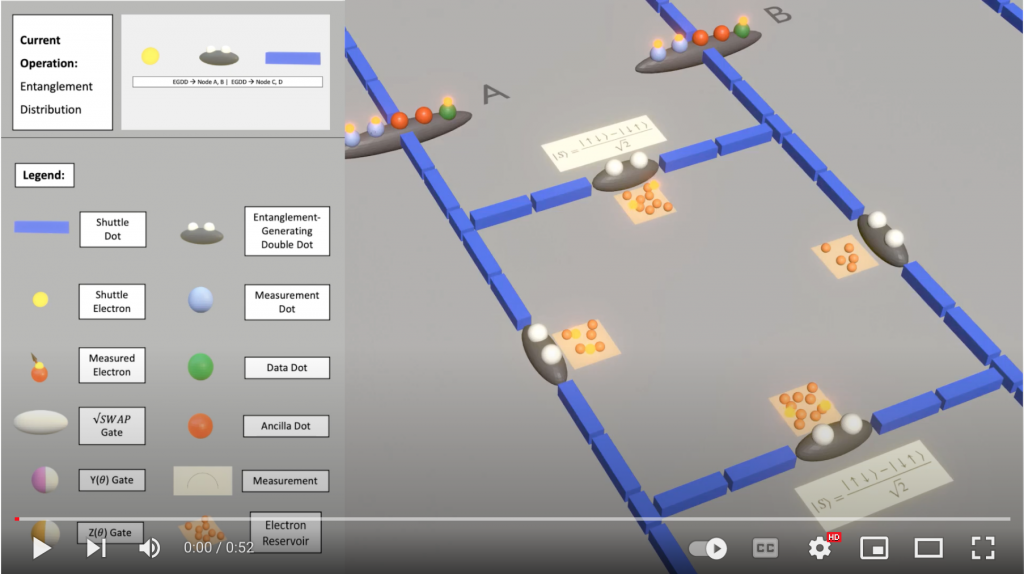Here is an animation based on our 2019 paper “Network architecture for a topological quantum computer in silicon”.
First, an entangled state of two spins is created by loading the electrons into the same dot, which leads to a spin singlet state via the Pauli exclusion principle. The electrons are then separated and shuttled to different nodes, thereby providing entanglement between the nodes.
After two entanglement distribution steps, a set of local operations is carried out on each node. First we form an entangled state of 4 qubits (spread over the 4 nodes); this is called a Greenberger-Horne-Zeilinger (GHZ) state, and is a key resource for the error correcting “surface code”.
Next, we perform conditional quantum logic operations between the “data” qubit in green, and the neighbouring ancilla qubit in red. Measuring the ancilla qubit on all four nodes tells us if an error has occurred or not, and provides information about the type of error so that it can be coherently corrected.
This animation provides a snapshot of what the operations would look like on a single 4-node “cell”. A large-scale quantum processor would consist of a 2D array of thousands or millions of such cells, all operating in parallel.
Credit: Joanna Roy, Ben van Osch, Annelise Bergeron

